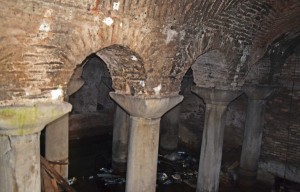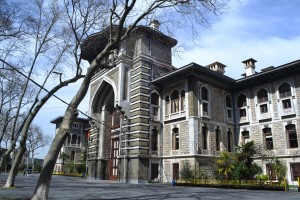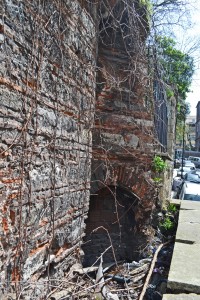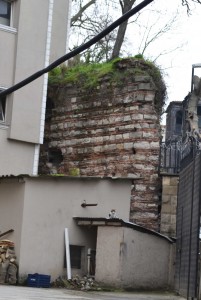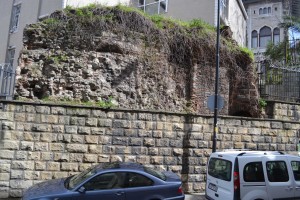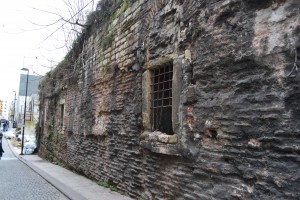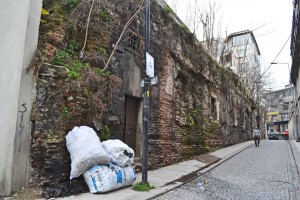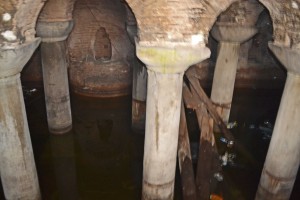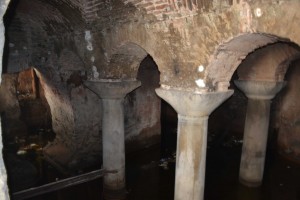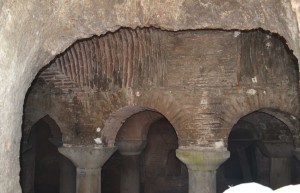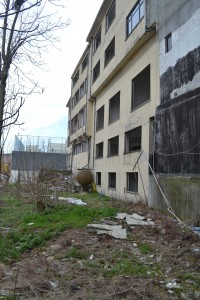Emperor Nikephorus Botaneiates ruled from 1078 to 1081. He (or a close relative) appears to have built a palace, as the unfortunate emperor Isaac II Angelos was obliged to give one of that name to the Genoese in the embarrassing kerfuffle leading up to the 1204 Latin invasion. As the various parties who were to make up the fourth crusade turned the screws on Constantinople, more and more money, properties and concessions were given in response to the demands of the eventual invaders. Some of the background to the strained relations between Isaac II and the forces of the third crusade (1189 – 1192) can be found here. A treaty of 1192 leaked another driblet of power and property from the shrivelled wineskin of Constantinople into the greedy mouth of Genoa.
In the grounds of the old Istanbul High School (Istanbul Erkek Lisesi) are some Byzantine remains that the academic might of Dumbarton Oaks identified as the Palace of the Botaneiates. West of the handsome late Ottoman school building (41.012416, 28.973071) is this structure.
It corresponds to the kind of brickwork characteristic of a church of the 11th century and a few arches hint at a grandeur that is very much gone. The Byzantium 1200 site has attempted an online reconstruction of the palace but this is based only on analysis of the wording of the 1192 treaty. The site appears to have contained two churches. The other may have been built over the cistern, substantial remains of which can be found downhill from the school (41.013501, 28.973445).
Along one of the few remaining Byzantine street frontages in Istanbul are several barred windows and doors. The window bars are so old that they have been pulled away so people can dump rubbish inside. The door to the eastern side does not appear to be locked but the weight of trash and the welding of corrosion mean that it can no longer be opened. So you get in through the window trash chute. I couldn’t find anyone with a key to the other doors. It may be available from the school. You’ll need a rope to get to the bottom. Don’t go soon after heavy rain. Water that adds romance to Yerebatan Cistern merely allows a lot of awful things to bump against your legs and keeps you wondering what horrors lie beneath the surface.
The wonderful Nicholas Artamonoff photographed the cistern in May 1945 and four of his pictures may be found here. My pictures from March 2015 show that little has changed except, if anything, the level of rubbish is lower now. Churches of this period were often built above such cisterns. One can climb onto the roof because the building above is derelict and the resident guard dog is desperate for attention. There’s not much to see.
One final point illustrates the tentative nature of church identification in Istanbul. The Byzantium 1200 site offers the comment that the Palace of the Botaneiates was more likely to have been in the Sarayburnu area. If this is true, this leaves us with no idea of what this place once was.

Categories: Uncategorized | No Comments »
